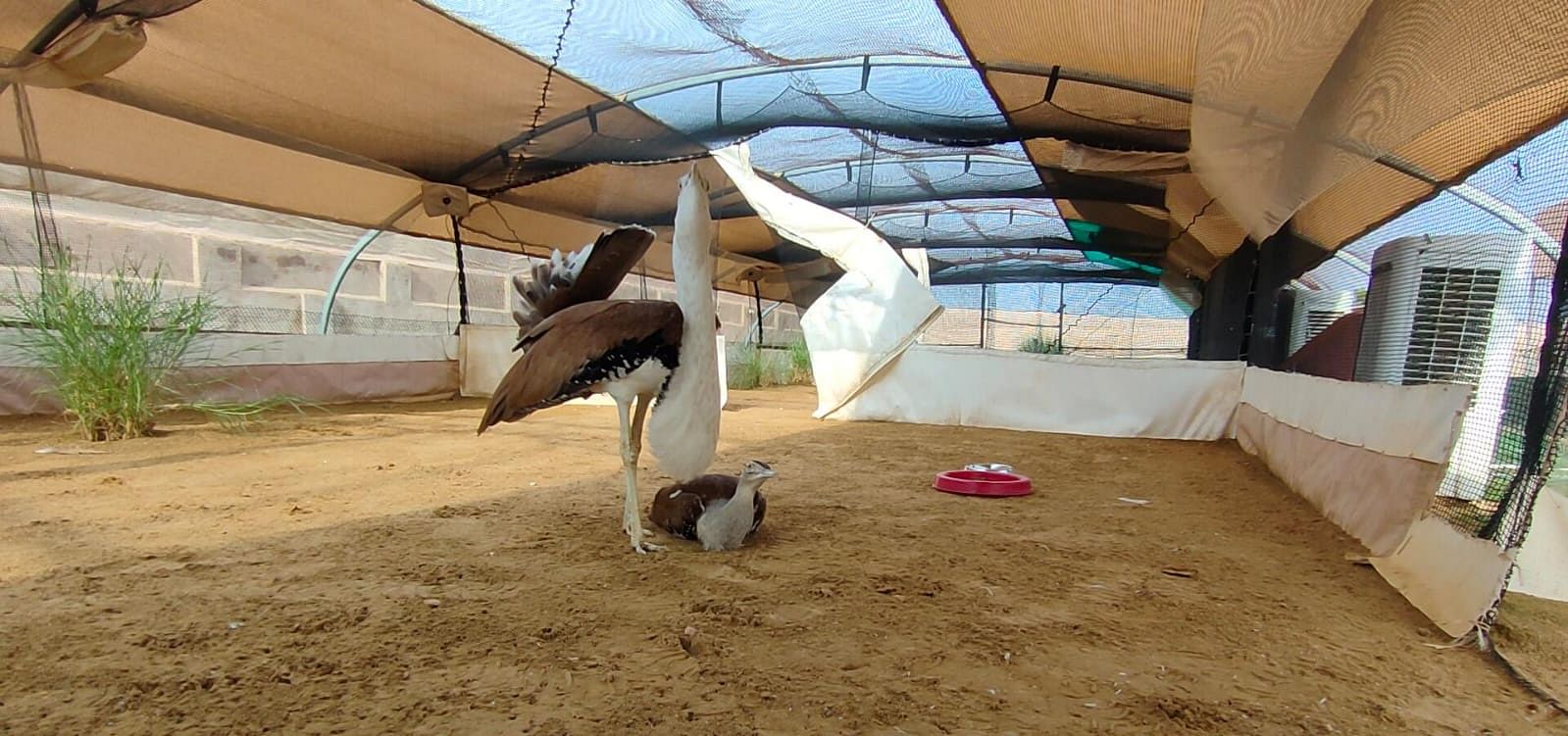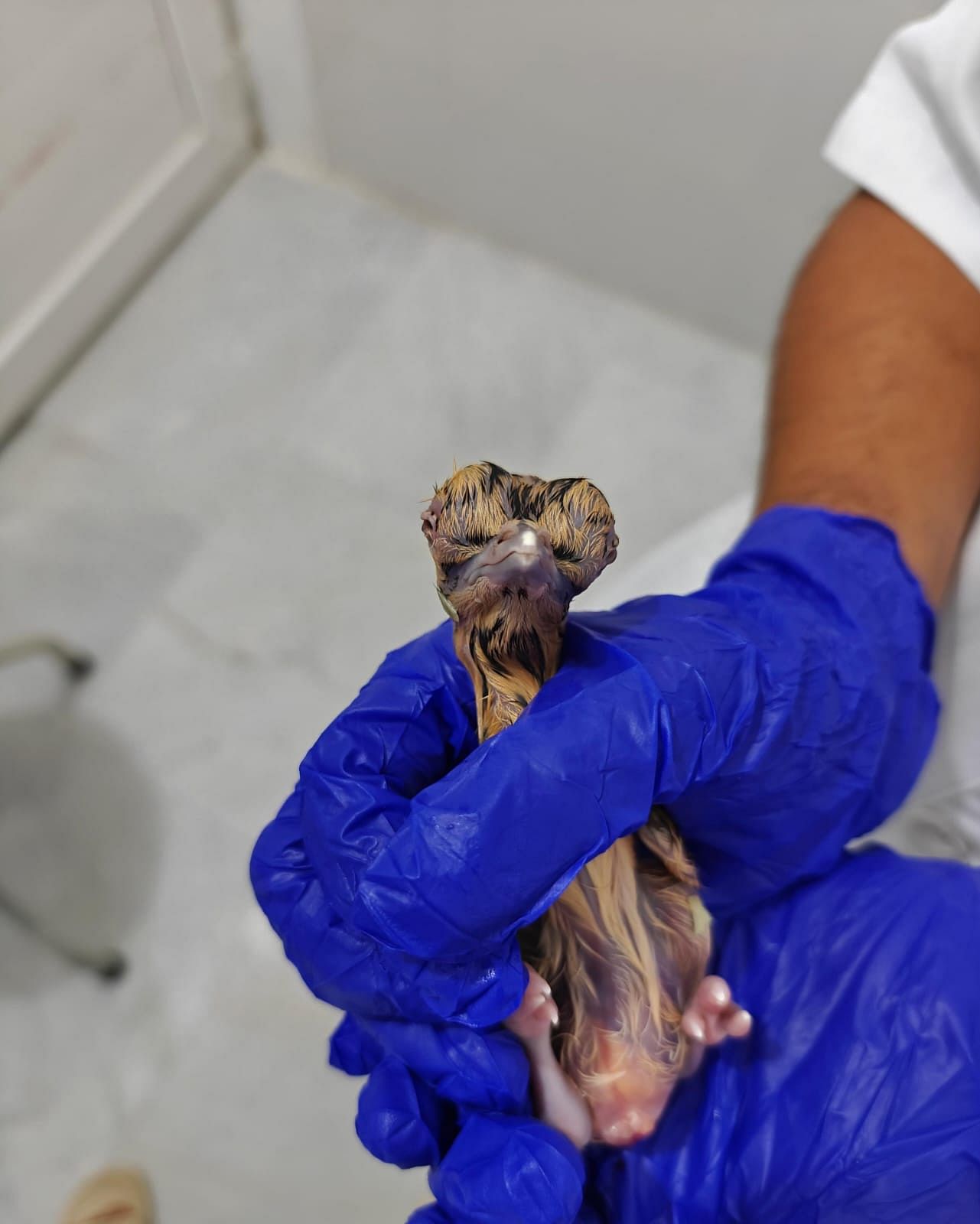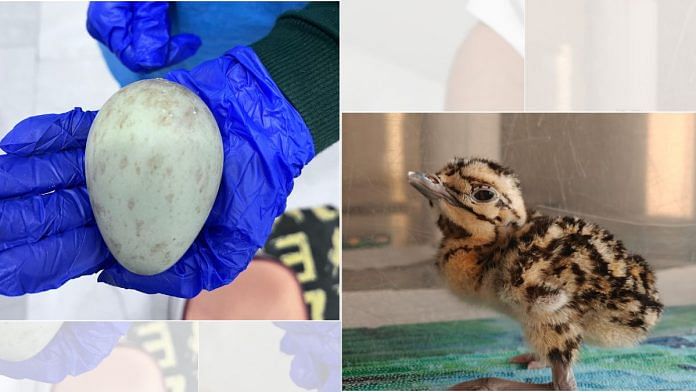New Delhi: The captive breeding programme of endangered Great Indian Bustards (GIB) in Rajasthan recorded another success with the birth of the first artificially bred chick this year on 9 March. This comes months after the first chick from the artificial insemination process hatched at the same centre.
The birth of the chick was announced by Union Minister for Environment, Forest and Climate Change Bhupendra Yadav in a post on X (formerly Twitter). The egg was laid on 12 February by a 4-year-old female (Rewa) after mating with a breeding male (Leo) on 7 February at the Sam Conservation Centre in Jaisalmer, he said.
It was then artificially hatched by the Project GIB team at the centre, which is part of the Union government’s Conservation Action Plan for the Great Indian Bustard.
The chick’s birth marked a big milestone: it was successfully hatched through artificial breeding by the centre’s team. In other words, the fertilised egg was incubated artificially by humans, rather than naturally by the mother.
The latest birth is a small but crucial victory in India’s fight to save the Great Indian Bustard, one of the world’s largest flying birds whose numbers began dwindling in the 1960s and now hover at around 150.

It takes the number of Great Indian Bustard births at the Jaisalmer centre to 45 since it opened its doors in 2019, with 15 of them bred artificially since 2023. One the birds has been bred through artificial insemination at the centre.
“India, as I often mention, is not just conserving but also restoring its ecosystem,” Yadav added on X.
Conservation breeding is essential for the GIB, with the birds listed as ‘Critically Endangered’ in the International Union for Conservation of Nature Red List. The bird is found almost exclusively in India and largely in the states of Gujarat and Rajasthan.
The Jaisalmer breeding centre, however, offers a flicker of hope. Its conservation breeding programme has three components—artificial insemination, captive breeding, and artificial incubation of wild eggs.
Artificial breeding in this case means the birds are bred entirely in captivity, right from fertilisation to the artificial incubation of fertilised eggs. In contrast, artificial incubation involves collecting eggs fertilised in the wild and then incubating and hatching them at the centre under controlled conditions.
Why conservation breeding is required
One of the main reasons the Great Indian Bustard remains critically endangered is its extremely slow breeding rate. The birds typically lay just one egg a year, and even those are often threatened by dogs and other such predators in the wild.
The Supreme Court has been actively involved in the conservation of the critically endangered bird.
Last year, the Centre told the Supreme Court that the decline in Great Indian Bustard numbers started in the 1960s because of low birth rate, poaching, habitat destruction and other factors.
The alarming decrease in numbers was also attributed to their frequent collisions with overhead power transmission lines, including those set up at solar power plants in their habitats. The birds have lateral vision as their eyes are on the sides of their head and they find it difficult to change their course of flight when confronted with a live wire.

The environment ministry launched the conservation breeding programme in 2019 with the Sam Conservation Centre, aiming to protect the few remaining birds and also help boost their reproduction rates.
The centre was stocked with facilities like artificial incubators, hatchers, chick rearing and housing, and it initially began incubating Great Indian Bustard eggs collected from the wild.
Now, the centre also takes care of eggs laid in captivity by incubating them and hand-rearing the chicks.
In October 2024, the Jaisalmer centre saw its first chick from the artificial insemination process hatch. It was achieved by teaching a male GIB to produce semen using dummy birds. This semen was then injected into a female bird. The first ‘AI-powered’ chick was named Arambh, or ‘beginning’ in Hindi.
The conservation breeding and rearing of the critically endangered bird will continue for at least another 5 years with a grant of Rs 77 crore from the National Compensatory Afforestation Fund Management and Planning Authority (CAMPA).
The centre is also looking at plans to begin rewilding the birds by 2027. Until then, each new birth offers hope that the Great Indian Bustard will be flying in the wild again soon.
(Edited by Sugita Katyal)
Also Read: Siberia to Mozambique via Manipur, how the Amur falcons traverse the world in search of warmth






